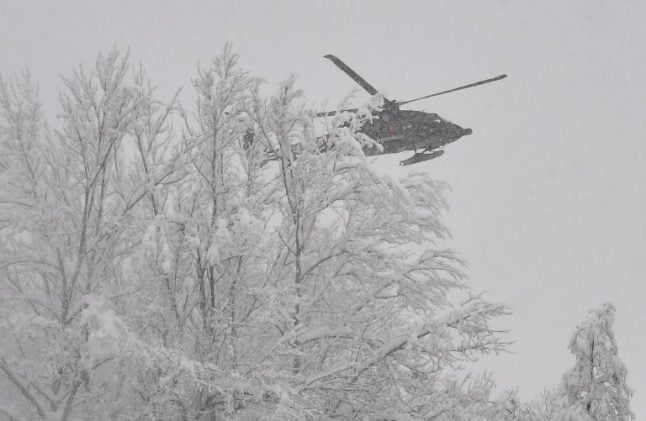The west and centre of the country have been carpeted in as much as three metres of snow, cutting off some areas.
“We can say statistically… that such quantities of snow above 800m altitude only happen once every 30 to 100 years,” Alexander Radlherr from Austria's Central Institution for Meteorology and Geodynamics said Thursday.
While demand for road salt has shot up, there had been “big problems in organising deliveries” due to numerous road closures, a spokeswoman for salt manufacturer Salinen Austria company told the APA agency.
In addition, some of the company's 500 employees have not been able to get to its headquarters in the mountainous Salzkammergut region.
Several ski stations in the regions of Styria, Upper and Lower Austria have also had to close, out of fear of avalanches, trees toppling under the weight of snow, or being cut off from the electricity network.
Much of the country is on its highest avalanche alert level, with seven skiers and snowshoe hikers having died since Saturday and two hikers missing.
Most of the victims perished in avalanches but emergency services say two of them died when falling into deep snowdrifts and suffocating.
Hundreds of soldiers, firefighters have been working alongside other public employees and volunteers to clear roads and roofs buried in the snowfall.
Brigadier Anton Waldner, army commander for the Salzburg region, told AFP that this year's exceptional snowfall had left his men with a “difficult situation”, as soldiers worked to clear snow off the roof of a school in the town of Lungötz in huge two-metre high blocks.
His forces were carrying out seven such operations and 300 men were on standby, Waldner said.
Meanwhile the country's tourism sector is also feeling the chill.
“We are fifty percent down on our short-term bookings,” said Petra Nocker-Schwarzenbacher, head of tourism at Austria's chamber of commerce.
“Everyone's watching the weather,” she said.




 Please whitelist us to continue reading.
Please whitelist us to continue reading.